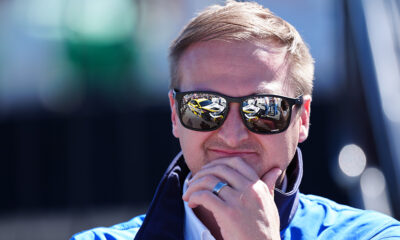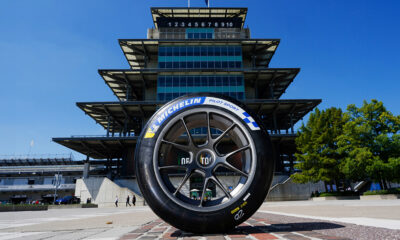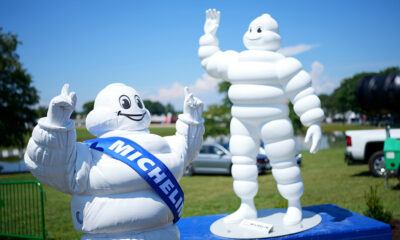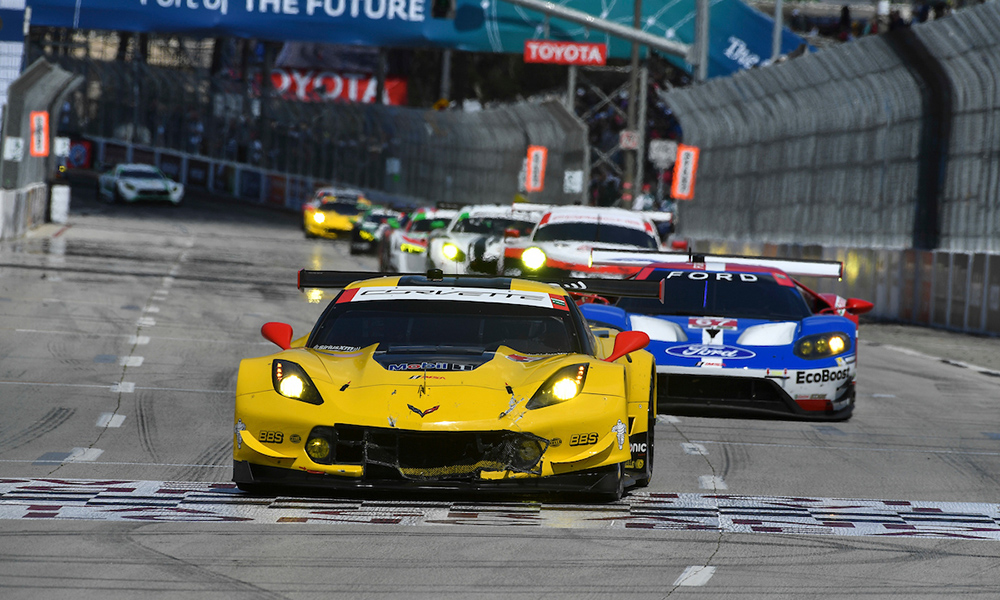
Photo: Michelin
It is 2,586 miles from Sebring, Fla. to Long Beach, Calif., site of the third round of the IMSA WeatherTech SportsCar Championship season.
From a race set-up, the 1.968-mile Long Beach street circuit may as well be a million miles away, or perhaps the 238,855 average miles from earth to the moon.
“The first three races of the season, Daytona, Sebring and Long Beach are all one-offs,” said Ken Payne, technical director of motorsport, Michelin North America.
“Daytona has the high banks and low-drag aerodynamic set-ups. Sebring is all about managing the bumps. Long Beach is figuring out the grip level on the only street circuit that our GT Le Mans (GTLM) class cars race on all year.
“Except for the Championship points, very little from the first two races or even from this race, carries forward into how the teams will perform during the heart of the season on the more traditional length races and circuits.”
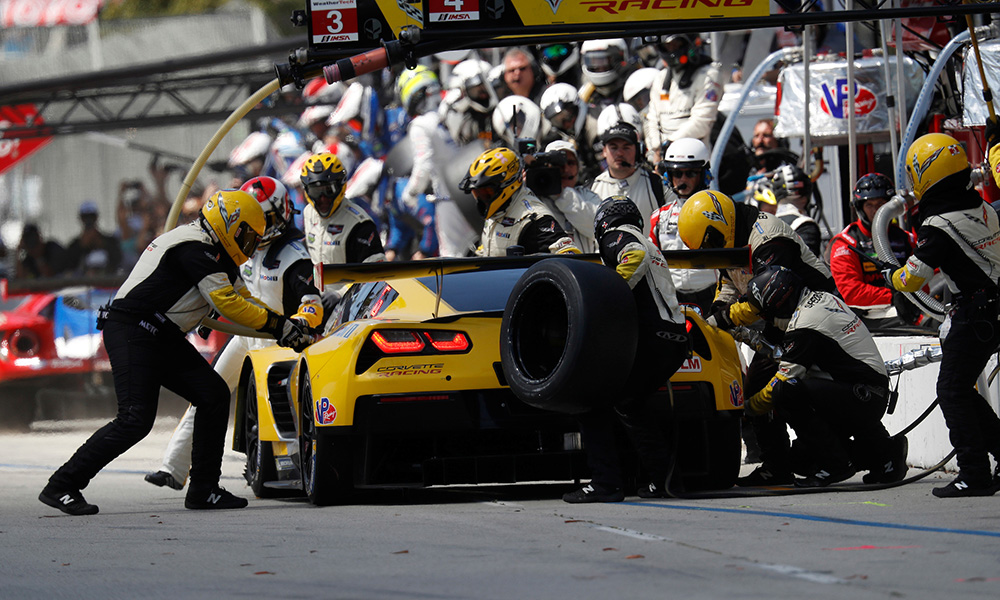
Photo: Mike Levitt/IMSA
One Stop Only
Another big factor in Long Beach is time, and how precious it is.
“Daytona and Sebring are very long races, so there is time to adjust, recover, experiment, and prepare for that final stages of the race. Here in Long Beach, the race is just 100 minutes long, so you may only have one pit stop,” Payne said.
“Both our Michelin soft and medium temperatures range tire solutions should be very effective.
“Some of our teams prefer to go with the softest option tire, but there are many ways to approach Long Beach, and our teams have won with softs, mediums, with one stop, two stops or even without changing tires.”
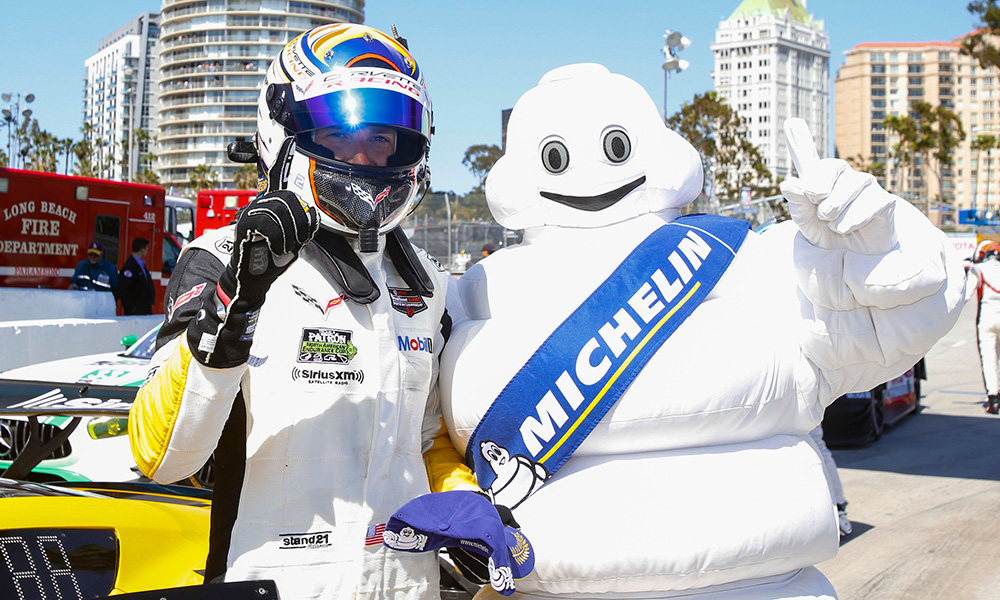
Photo: Jake Galstad/IMSA
It Isn’t Over
Dan Binks of Corvette Racing says, “Long Beach is like playing Russian roulette.”
In 2016, Tommy Milner in the No. 4 Corvette C7.R was leading with less than one and one half laps to go when he approached the Hairpin at Turn 11 with a pair of Porsches in pursuit.
But Fred Makowiecki in the No. 912 Porsche knocked at Milner’s right side door, and hit it so hard that it broke the Porsche’s suspension while spinning Milner around. This opened the door for Makowiecki’s Porsche teammate Nick Tandy to snatch the victory.
Milner recovered to finish second and salvage points that helped carry him and co-driver Oliver Gavin to the championship.
Last year, the situation was a bit different. Binks’ driver, Antonio Garcia aboard the No. 3 Corvette, appeared to have the race well in hand as he headed into the final turn on the last lap.
But there was just one problem: the track was blocked.
Garcia anticipated a gap to the outside. Milner, who was trailing, hung back just enough in the scramble to see an opening appear first on the inside and led a Corvette, Ford, Porsche and BMW GTLM freight train to the finish line before Garcia could get clear to claim fifth. He and Jan Magnussen went on to claim the GTLM championship.
Despite the last-corner drama, both cars that lost out at Long Beach ultimately have gone on to claim the year-end titles.
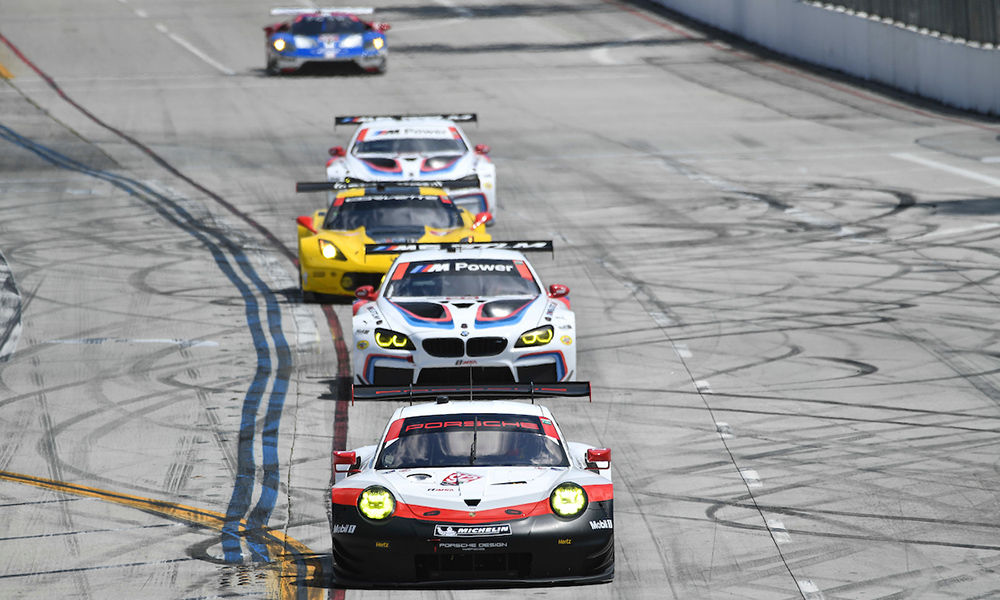
Photo: Michelin
Short Race, Lots of Options
Michelin’s Payne, a creative type considering his background as an environmental engineer who worked in the world of nuclear power prior to joining Michelin 30 years ago, sees various options.
“You can plan to stop early. You can plan to stop late. You can plan to split the race in half, then you can throw all of those plans out the window because that is rarely how it unfolds at Long Beach,” he said.
“If you start mid-pack or get stuck in traffic, you can go short on the first stint, have a shorter refueling, a clear track to make up time and regain track position if the field pits on a yellow.
“If you go long on the first stint, perhaps with the medium tires, you will need a bit less time for refueling and a shorter run to the finish, which may be with the softer option tire.
“Of course, all of that changes with a yellow.”
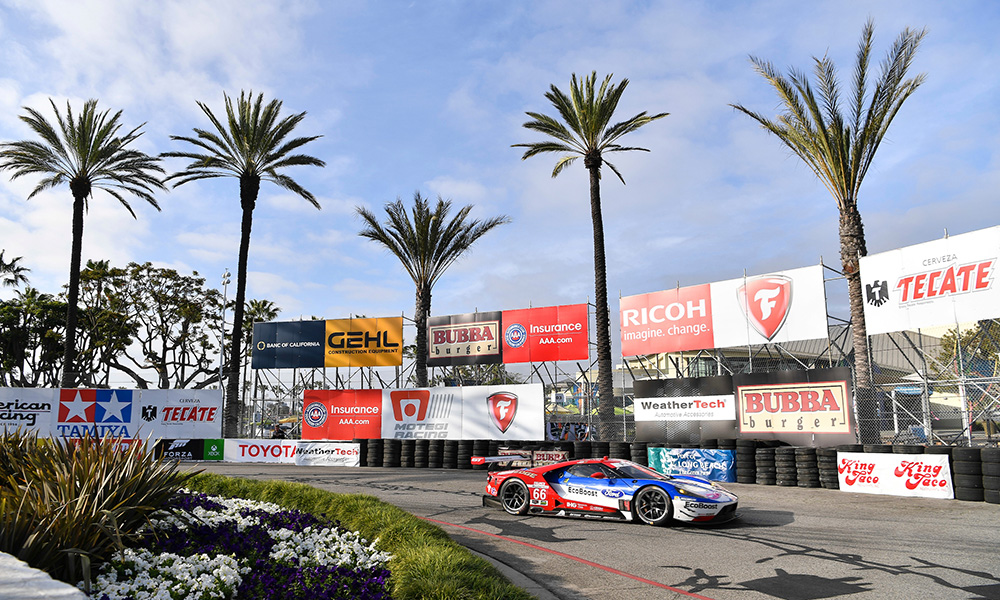
Photo: Rick Dole/IMSA
The Forecast
The race start at 1:05 p.m. will put the WeatherTech Championship cars on track with the sun nearly directly overhead. The preliminary weather forecast is for a hot and sunny race with an ambient of 79-82 (Fahrenheit) degrees during the race.
“The circuit switches from asphalt to concrete and back and the temperatures and grip levels may push teams toward one solution or the other depending on their sets up and race strategies” said Payne.
“The start of the race can be a bit messy with the interactions of the tire compounds from the other series that have preceded our race.
“You have four major factory teams and manufacturers with top drivers and crews, and some very savvy folks on the pit stands who can split their strategies. Someone will make the right call or get the right break at the right time.
“You won’t know who that was until someone crosses the line.”





















